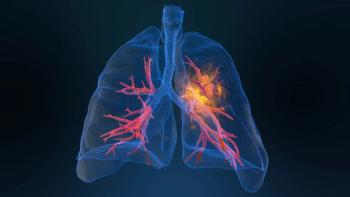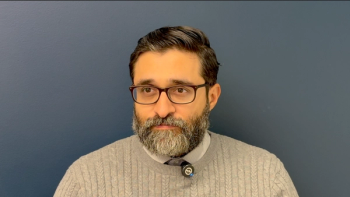
Effect of Trilaciclib on Myelosuppression in Previously Treated Extensive-Stage Small-Cell Lung Cancer
Researchers evaluated the effect of trilaciclib to a topotecan regimen in reducing chemotherapy-induced myelosuppression in newly diagnosed extensive-stage small-cell lung cancer.
CHICAGO-Addition of the selective, reversible cyclin-dependent kinase (CDK) 4/6 inhibitor trilaciclib to a topotecan regimen reduced chemotherapy-induced myelosuppression in newly diagnosed extensive-stage small-cell lung cancer (ES-SCLC). In addition, there was no difference in topotecan efficacy between participants who received trilaciclib vs placebo in the multicenter phase II study (
Despite the availability of rescue medications like granulocyte colony–stimulating factor (GCSF) and erythropoietin-stimulating agents, multi-lineage myelosuppression can occur with chemotherapy, leading to dose reductions and delays due to hematologic adverse events. Trilaciclib temporarily blocks hematopoietic stem/progenitor cells from proceeding through the cell cycle, protecting them from the effects of chemotherapy.
The data add to previous results suggesting that trilaciclib may have benefit, but no firm conclusions should yet be drawn, according to
The trial randomized 61 patients to trilaciclib/topotecan or placebo/topotecan on days 1 to 5 of 21-day cycles. No prophylactic growth factors were given during the first cycle of treatment. Included patients were Eastern Cooperative Oncology Group performance status 0 to 2, and had disease progression during or after prior first/second-line chemotherapy.
Patients taking trilaciclib completed more treatment cycles (mean, 4 [standard deviation, 3.4] vs 5 [standard deviation, 54.1]). Severe neutropenia during the first cycle was reduced in patients taking topotecan combined with trilaciclib (40.6% vs 75.9% placebo; P = .016). It also reduced duration of neutropenia (2 days vs 8 days; P < .0001), which is a surrogate for risk of febrile neutropenia, infection, intravenous antibiotic use, and hospitalizations.
Patients in the trilaciclib group had fewer red blood cell transfusions at 5 or more weeks (31.3% vs 41.4%), and fewer GCSF administrations (50% vs 65.5%). High-grade hematologic toxicities were less frequent in the trilaciclib arm, most notably neutropenia (75.0% vs 85.7%) and anemia (53.1% vs 85.7%). No fatal adverse events were deemed to be linked to trilaciclib.
Trilaciclib and placebo arms had similar overall response rates (16.7% vs 23.1%) and progression-free survival (P = .6233). Overall survival (OS) was similar in the two groups, though OS outside the United States favored the placebo group (median, 8.7 months vs 5.2 months) without reaching statistical significance (P = .099).
The real question, said Farago, is whether trilaciclib added to topotecan can increase chemotherapy exposure and thus potentially improve overall efficacy. She noted the small increase in the average number of treatment cycles between the two groups, but was not convinced by it. “This trend is not yet clearly observed in this study. This also gets at the question of whether more chemotherapy is necessarily better, and I don’t think we know the answer to that.”
Newsletter
Stay up to date on recent advances in the multidisciplinary approach to cancer.




















































































